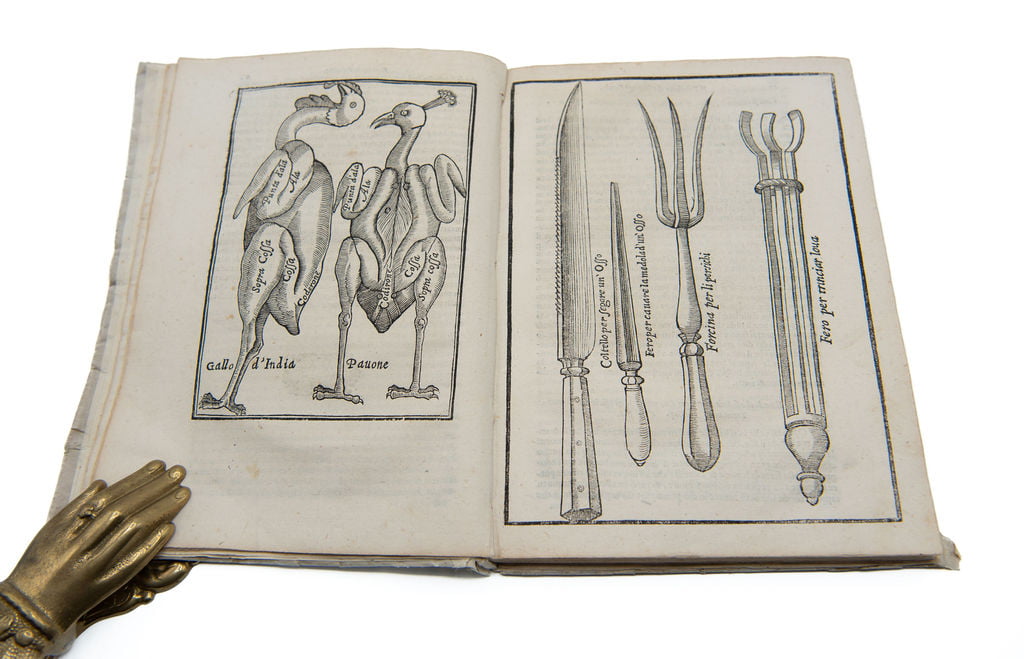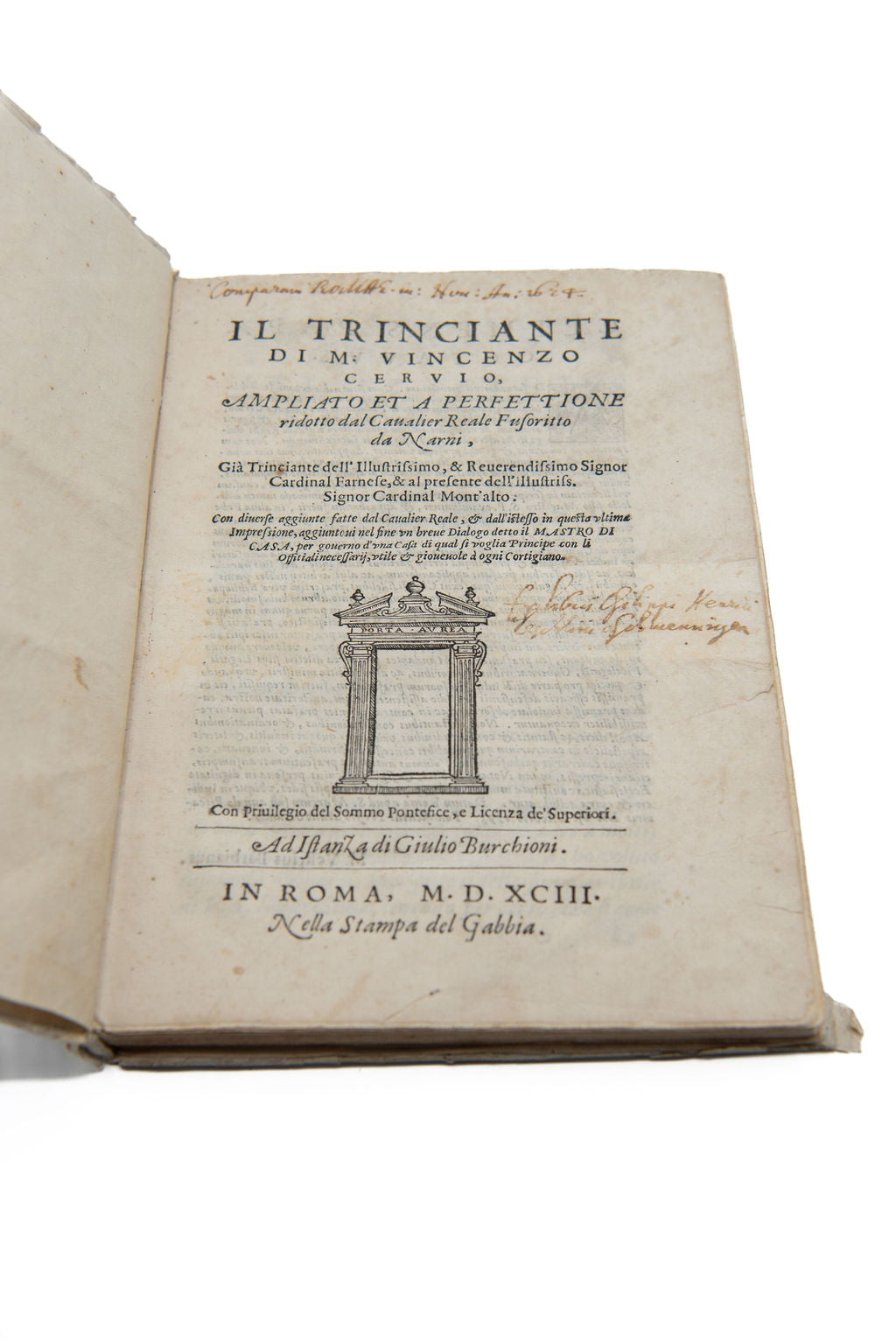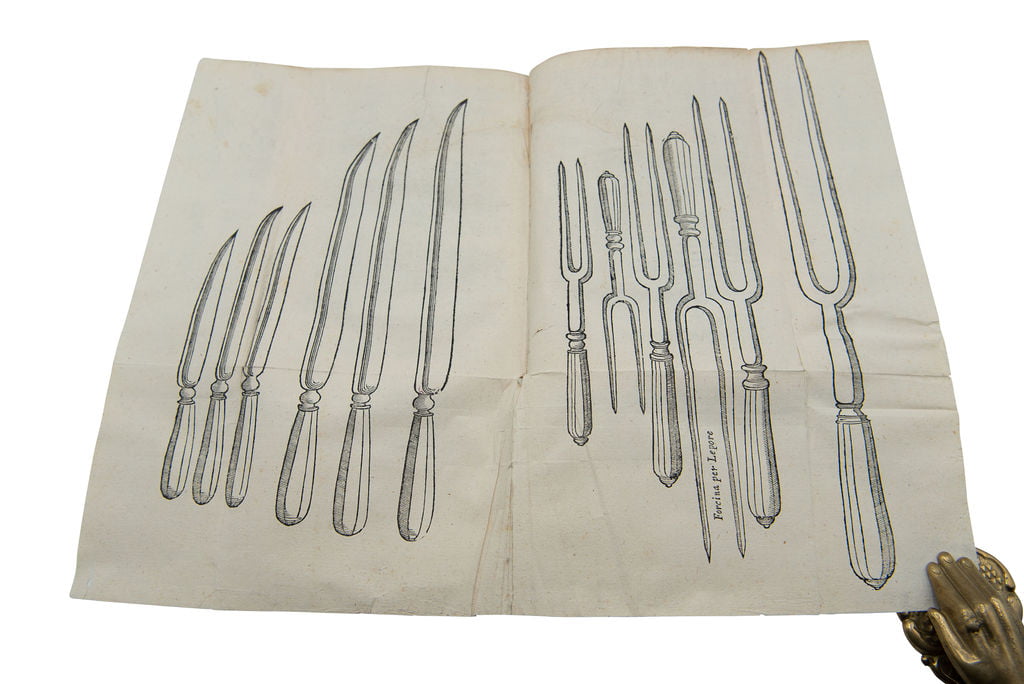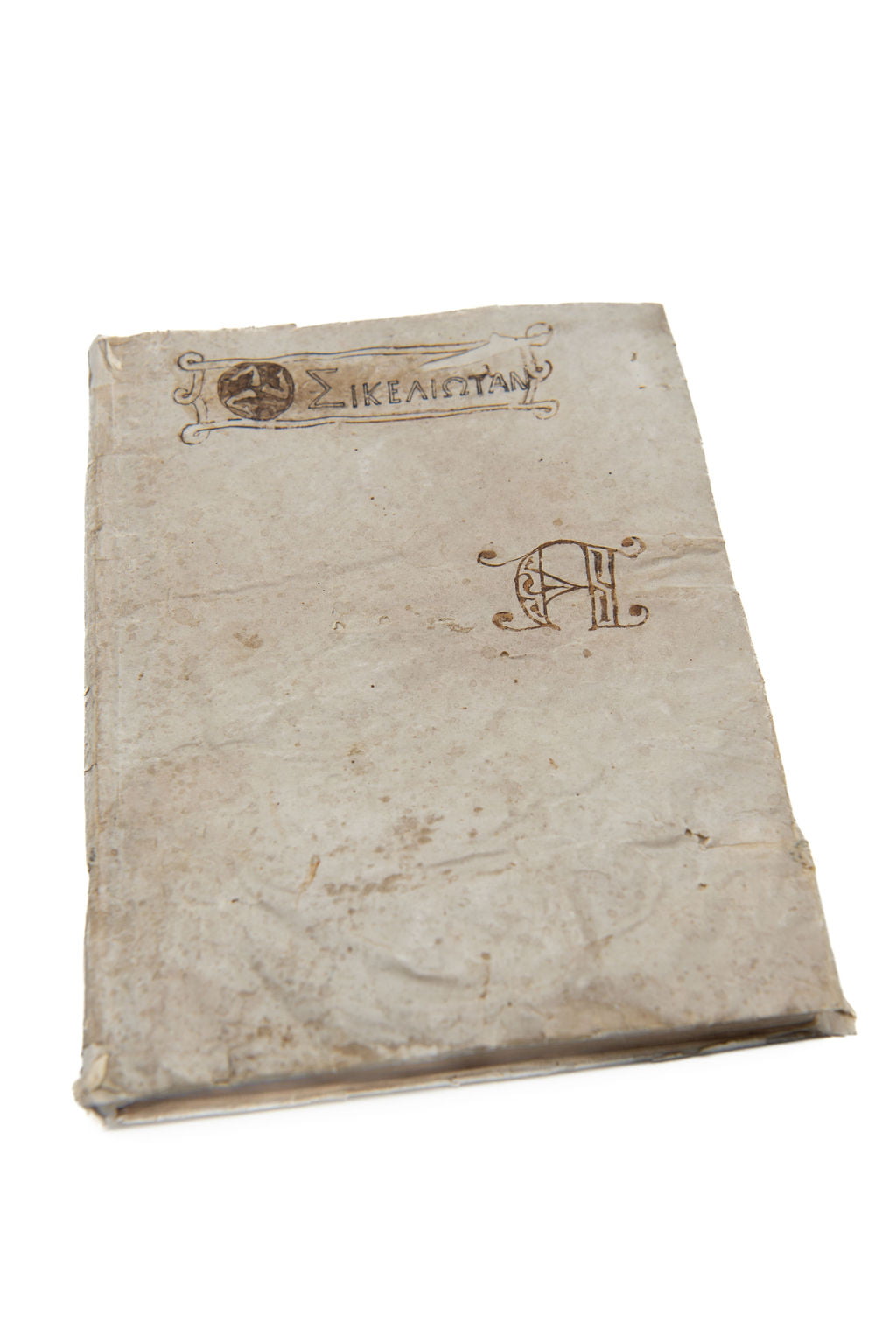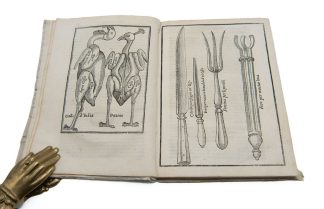CERVIO, Vincenzo.
ENGRAVED CARVING FROM SICILY
Il Trinciante… Ampliato et a Perfettione.
Rome, Giulio Burchioni, 1593£9,500.00
4to. Pp. (viii) 162 (ii). 3 sections in 1, pages numbered continuously. Roman letter. Woodcut architectural printer’s device to each tp and recto of last, ornamental and floriated head and tail pieces and initials. Four full page culinary engravings, one large double fold out illustration of carving utensils. Ms to tp, ‘Comparum ROMAE . in: Nov: An: 1624’, beneath in another hand ‘Ex libris Filippi Henrici Zeschlinis a Schwenni(n)gen’. Light age yellowing, 14 leaves with some browning, light marginal foxing. In full contemp. presumably Sicilian vellum, triskele design to upper cover in ink, within border, large Lombard initial A below, all contemporary.
Beautifully illustrated edition of this important, pioneering work on the art of carving by Vincenzo Cervio, the first published in Rome and featuring contributions by Fusoritto de Narni and Cesare Pandini. It is a culinary treatise which advises the reader on how to cut and carve dishes of all varieties, complete with charming plates demonstrating carving utensils, a fishing scene and a fully set Renaissance table. Trinciante means any blade suitable for chopping. Banquets were of enormous importance in terms of tradition, displaying wealth or social status, and forming close friendships or allies. The carver transformed the act of cutting meat into a complex art, where showmanship and detailed knowledge of poultry, fish, and red meats was essential. He was treated as a man of utmost importance, and carving was a serious and respected practice.
The cover has a stunning evocation of the Triskele, symbol of Sicily. A Greek inscription accompanies it: . This translates to Sikeliotan, or Siceliot, meaning an ancient Greek colonist in Sicily, indicating perhaps the original owner was proud of his Sicilian heritage. It is also similar phonetically to the name of the book, especially when using the alternative title for the Triskeles, the ‘Trinacria’; perhaps it is a play on words with the Triciante.
Cervio had been in the service of Alessandro Farnese, the Italian general and duke. The work is presented in a didactic manner, and uses labelled anatomical illustrations of birds including peacocks, turkeys and pheasants to describe how they should be correctly cut and served. Also included are fruits, pies, fish and eggs. The importance Cervio places on his craft is demonstrated in his insistence that a carver should also have a brilliant education and morals. The act of carving takes place in a theatrical fashion; the left hand pierces the food with a carving fork and lifts it up, the right hand cuts according to anatomical standards. No court carver should cut pieces whilst the meat lay on a dish. Cut pieces fall to the plate untouched and are then salted and presented to guests. Sections discuss how to prepare and present food for popes, kings and princes. The guests of highest honour were given the best cuts of meat and served before the others. For this reason, carving was closely associated with status. This also gave the carver a powerful role in choosing who was served first, and what cut they were given.
An additional section, with a separate title page also dated 1593, is by the successor of Cervio, triciante to Alessandro Farnese, Fusoritto de Narni, describing the art of banqueting. It is the second edition, ‘emendata, & Ampliata’, and includes two full page plates showing men fishing and a table set out for a feast. Both men earned an enormous salary of around 800 scudi a year, showing the importance of their positions in Farnese’s court. A third section, newly included in the 1593 edition, is by Cesare Pandini entitled ‘Il maestro di casa’. He was similarly employed by Farnese, and his contribution features a large fold out plate showing various carving utensils, remarkably similar in appearance to those of the present day.
“Comparum Romae – Nov. An. 1624” can be translated as “[this book is] of the companions/comrades in Rome, November, Year 1624”, likely a group of friends or members of the same organisation. Philipp Heinrich von Zeschlin (or Zöschlin, d. 1640), was the son of the German lawyer and statesman Johann Zöschlin (1566 – 1639), owner of the Kalteneck Castle in Schwenningen. Interestingly, Philipp Heinrich is registered in a list of German students of the University of Siena (F. Weigle, ‘Die Matrikel der deutschen Nation in Siena, 1573-1738’), and he probably bought this book during his studies in Italy.
BM STC It. p. 166; Adams C1287; BING 456; Westbury p. 46; Bitting has 1604; Vicaire p. 159; Not in Oberlé. On Philipp Heinrich von Zeschlin, see also CERL Thesaurus, id. cnp02069348.

